Cuba
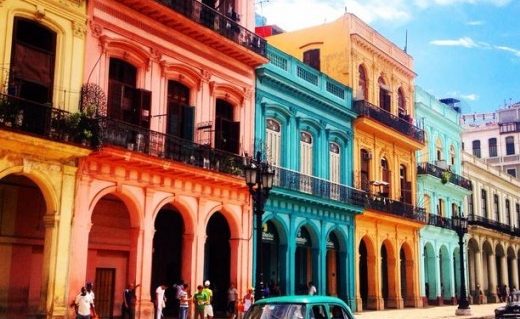
By David Astin
[Our thanks to David for this comprehensive article. He is an ‘old Cuba hand’ and knows more about that fascinating island than any travel agent (or ‘Smart Traveller.’). The Varnished Culture has had its reservations about Castro and his legacy, although there’s no denying that he had genuine passion and guts, but we still mean to go to Cuba, and David’s piece is an invaluable source for those who do.]
I am not going to go into the Cuban political situation, much as I disagree with it. That is not what this article is about. This article is to debunk some of the stories and rumours promulgated about Cuba and its inhabitants and to let people who haven’t been to Cuba know a little about what goes on in day to day life in the most interesting island in the Caribbean.
Anyway; Cuba.
I first visited Cuba in 2011, taking a guided tour over the whole country twice. I have visited the country 6 times since and still get amazed at this place and the changes that have occurred in the past 7 years with the opening up of the economy internally, allowing locals to open their own shops, the buying and selling of real estate being leagalised and farmers able to sell excess produce over the counter rather than on the black market. I have good friends who I will call Ernesto and Lorena (real names Roberto and Viviana) who help with some translations and advice on local customs.
From Australia, it’s not an easy place to get to as I transit through Santiago Chile, then Panama and on to Havana; a journey of about 30 hours all up. When visiting Cuba these days, I base myself in the Capital Havana (usually La Habana Vieja, or Old Havana), a city with 500 years of architectural history and a population of about 2.1 million.
The Country itself has a total population of about 11 million people which consists of approximately 66% White, 27% Mulatto or Mestizo and 8% Black (none of these terms are considered derogatory in Cuban society) and there doesn’t seem to be any animosity between races. In 2010, the religious affiliation of the country was estimated to be 59% Christian (mostly Roman Catholic dating back to Spanish colonization), 24% unaffiliated, 16.5% Folk Religion (popular local beliefs such as Santeria), and the remaining 0.5% consisting of other religions. Jews number around 500, Muslims even less. Cuba is officially a secular state. Religious freedom increased through the 1980s, with the government amending the constitution in 1992 to drop the state’s characterization as atheistic.
The first thing you notice after disembarking at José Marti Airport is the lack of air-conditioning and Soviet ‘Concrete Brutal’ architecture. The non-smiling, uniformed airport staff are not so much unhelpful, more fed up. I must admit though, when on one visit, my luggage went missing somewhere between Sydney and Havana and me without a word of Spanish, I did manage to get some assistance after being sent hither and yon, finally making it to the lost luggage dept. Just like a lot of European ex-Soviet countries, there are those that want to help and those that don’t. My suitcase arrived 24 hours later, after having an extra nights stopover in Panama, and some of the staff did try to be helpful.
Before leaving the airport, it is important to obtain Cuban currency for the taxi trip to Havana city. British pounds and Euros are readily accepted at the exchange desk, as are Canadian Dollars. Arrive with American cash and you will be penalised by a surcharge of about 10-15%. Cuba has 2 currencies. You will change your Pounds or Euros for CUC’s (Cuban Convertible Peso) whose value is tied to that of the American dollar so USD$1.00=CUC$1.00. This currency (called the ‘cook’ by the locals) is what is used for all transactions in hotels, restaurants, bars and suchlike. The other currency is the CUP (National Peso). The CUP is usually worth about 0.24¢ to the American dollar, so USD$1.00 = CUP$24.00. Employees of the Cuban state and of state enterprises are paid their basic salary in CUP, with some paid a performance-dependent bonus in CUC. Staple goods and services not oriented towards foreigners are usually paid in CUP. ‘Luxury’ goods and services, including most imported goods and anything intended for consumption by foreigners, are generally paid for in CUC.
Some Cuban state workers receive a portion of their wages in convertible pesos, the rest in national pesos. Shops selling basics, like fruit and vegetables to locals, generally accept only the national peso. The word “pesos” may refer to both non-convertible and convertible money. Goods bought in national pesos (food, clothing) have controlled prices. Ration cards do exist for all citizens and are not means tested. The likes of bread, cooking oil, rice, sugar and coffee etc. are available for those having trouble making ends meet. Those that don’t have need for the food available from the ration card usually only take the goods when a family member needs a hand for whatever reason. This brings me to one of the first surprises in Cuba. No-one is hungry. Everyone is fed. There is very little on the street begging for money for food compared to any other country that I have visited (not even on a blanket with a little doggy by their side à la Britain). Oh, and by the way, there is no homelessness, either. Everyone has somewhere to sleep. It certainly won’t be as good as we would expect in a motel or backpacker hostel, but no-one sleeps rough.
So now we have left the airport and are heading to Havana in a Lada or fairly new Hyundai taxi without a meter. This isn’t a problem as the fare from the airport to Havana is around 30CUC, negotiated with your driver. As I have been there a few times, I get a friend of mine named Juan (real name Cesar) to pick me up in his nice, shiny 1957 Chev with a 2.1L Toyota diesel engine under the bonnet. I’ll give him $40CUC for the personalised service and his agreement not to play Phil Collins (in Spanish) on his car stereo.
This is when you start to see that Cuba is not like any other country. Whilst moving through rural areas towards the city (about a 30 minute drive), you notice that the road is in a deplorable condition and the cars seem to be of a 1950’s and 1960’s vintage with most belching blue/ black smoke of lung busting qualities. There seems to be scant regard to road rules. This doesn’t seem to affect traffic flow; bikes with side cars, horses attached to carts, bicycles and busses crammed like sardine tins compete for available road space. Being overtaken by a 1948 Pontiac filled with 8 people, all happily smoking cigarettes or cigars and smiling whilst trying to avoid numerous cars beached at the side of the road, bonnet up and a crowd resembling a group surrounding a Bimah reading scriptures is all in an afternoons drive.
I stay in 4-5 star motels, so I have a high level of comfort. As in most countries, there are a wide range of levels of accommodation available; from backpacker and B&B to what I enjoy. I also find that one of the pleasures of staying in Cuba is the lack of mobile phone coverage for visitors. The locals have mobile phones not dissimilar to ours, but they run on their own network. Same for the internet. Due to the American blockade, Google and other American internet companies don’t operate in Cuba and block usage of their systems. The locals have limited access to the internet which is government controlled, and downloads are limited to 1mb with a total of 10mb per month. This might seem draconian to us (and is), but you’ll find Cubans talking to each other, children playing games and people reading books rather than being glued to computer or phone screens. As a visitor, I can purchase an internet card that will give me free access to the hotel internet, so I can dial out to the world and keep in contact with people and news. Of course, most Cubans have their time fully occupied making ends meet on a day to day basis. TV’s, refrigerators, clothes driers are readily available in the shops, but very few can afford them. Bureaucracy is endemic and endless paperwork is needed for the most simple of tasks like applying for a driver’s license.

Settling into my motel room, I turn on the TV. Another Cuban surprise: CNN, American ‘football’, American basketball, American baseball, BBC World News. Then there are the Cuban news and entertainment channels. Mostly hyped up salsa music and dancing, along with quizzes and soap operas. It’s also interesting to note that Scooby Doo can speak Spanish. Then there is another surprise: At least 3 channels of Chinese programs. News, current affairs, soap operas and movies. Why is this so? Because China is investing massive amounts of money in Cuba. All tourist coaches (nice, air-conditioned, comfortable, spacious things with fridges for water bottles) are of Chinese origin. As America has an embargo on dealing with Cuba, you can be assured that the Chinese will be only too happy to fill the void left after the demise of the Soviet Union.
Your average Cuban is decently dressed and fed. Of course, there are those on the fringes of society, but even these people have enough to eat. There is no real obesity as ‘fast food’ doesn’t exist. No Macca’s, Pizza Hut, KFC… just fresh food. Lots of vegetables and fresh fruit too. As far as meat is concerned, there is an abundance of chicken and pork but very little beef, as cows can be milked and oxen can be used for plowing fields. Breakfast would consist of eggs, bread and fresh fruit. Lunch is more of a snack with sandwiches readily available, or maybe a chicken or tuna salad might be more to your liking. Evening meals would be roast chicken or pork with boiled or steamed vegetables. Black beans are also a favorite at most meals. Yes, some love to drink too much beer and rum or eat a lot of cake, not dance enough or suffer from a medical condition, but in general, your average Cuban is fairly fit. They do a lot of walking. The public transport is rudimentary at best and not recommended for the unwary tourist. Crammed and dirty, this be where pick-pockets lurk. It’s easy enough to get a tourist coach to ferry you between provinces and major cities. Tickets available in most large hotels. Private taxi hire is easy enough to use in cities as long as you know where you are going. Biki Taxis (3 wheeled cycles with room for 2 passengers) are everywhere. The phrase you will hear most often in Cuban town and cities is “Taxi, sir?” Always negotiate the fare beforehand with both these forms of transport.
As far as drinks are concerned, there is the local lemonade and cola. Not Coca-Cola in a lot of places, although Coke are rumoured to be avoiding the embargo by sneaking it in through Mexico in increasing quantities these days. Most fizzy, non-alcoholic drinks are used to create fizzy, alcoholic drinks which mainly consist of Mojitos, which seems to be the equivalent of the English G&T or Scottish Whisky as a national drink and Cuba Libre (rum and cola). Apparently, it is OK to drink before 11am, but only pina coladas, as they have coconut milk in them. In fact, most drinks seem to have a healthy (ahem) splash of rum attached and why not? Havana Club white rum costs about £3.00 for a 700ml bottle, so a night in is cheap and a night out won’t break the bank either, but you might pay for it in the morning! All other types of spirits are available with the exception of bourbon and you can understand why. Most of the wine is from Chile and if you prefer a beer, the main brands are Cristal (4.9% ABV) and Bucanero (5.4% ABV). Both are a larger style from the Cerveza Brewery and are available in cans and bottles. No draught (tap) beer is served in hotels or bars. A 350ml bottle of Bucanero would cost you about £1.20.
One thing that has changed over the last few years is a few micro-breweries that have popped up, selling very acceptable beers. In Vieja square, you can sample beers with the obscure descriptive names of “Black”, “Dark” and “Light”. Another is located in an old converted tobacco warehouse, now a waterfront brewery (using mainly Austrian equipment and hops) with different 8-12 piece bands playing every day (usually changing every 2 hours or so) and lots of people dancing. CD’s readily available from the band for about £7.00. Again, the beer is called “Black”, “Dark” and “Light”, but is most acceptable when brought to your table in a “beer tower”, allowing you to pour your own beer whenever you want.
If alcohol is not your scene, you’ll find some of the finest coffees in the world. Strong? You’ll need a fork to drink it.
Architecture is another bonus. Art Deco, Spanish, Classical, Gothic; it’s all here and in varying states of deterioration. Strolling around Old Havana, a lot of the buildings are showing signs of neglect. Concrete cancer, peeling paint, rotten wood and weeds growing out of brickwork. This is because the buildings in Havana have been neglected for over 50 years. Before the 1959 Revolution against the Batista regime, Havana was like a honey-pot for all the rich and famous, along with major drug dealers and Sicilian Mafioso. The city was filled with casinos and the high life, whilst the rest of the country was forgotten about and decayed. The country folk lived in abject poverty whilst the capital swam in dirty money and crime. Following the revolution, Castro attempted to rebuild the outlying areas with limited money, limited expertise and limited success. Because of this, Havana was forgotten about and the results of this can be seen today. Broken buildings, cobble stone streets being constantly dug up to replace leaking pipes among magnificent cathedrals, huge Greek and Roman style columns in front of massive buildings that can’t be viewed because of the narrowness of the streets and wonderful Art Deco facades from a time when Havana must have seemed like the centre of the world to its important guests. Of course, the locals saw little of this payola. It is amazing to see a city that seems to have survived some 50 years without any money spent on its upkeep. Imagine the state that London or Paris would be in if there were no roadworks, building renovations or repairs for 50 years (some unkind souls might suggest that Paris might actually improve). One must be careful though. The Cuban road workers and footpath workers have yet to hear about safety barriers or warning signs advising of upcoming excavations, so keeping an eye in front of you is advisable.
A fairly decent restoration job is being done on the Ballet and Capitol buildings (see above, and below). The Capitol building is an exact copy of the American Capitol building. The Spanish built it to show the Americans that anything they could do, the Spanish could do too. Apparently, when the Cuban flag is raised on this building (which should be finished being restored mid this year), the flag will be 1 metre taller than the American one. The barricades are no longer in front of the ballet and it is now open to the public.
Another Cuban surprise is personal safety, especially when wandering around the back streets of a capital city in a communist country. When I first arrived in the country, I had photocopies of my passport in my luggage, wallet and hand luggage, expecting to be asked for my identification every time I entered a shop or bar. Totally wrong. Cuban surprise: there are no CCTV cameras mounted on every street corner, unlike most capital cities that I have visited. No great police presence either and those police (usually accompanied by a leashed German Shepherd), seem to be bored more than anything else. I asked Ernesto, this anonymous Cuban friend of mine (real name Roberto) in his early 60’s about the prevalence of bank robberies and he replied that he hadn’t heard of one on his lifetime. I’m not saying that Cuba is crime free, but with almost zero illicit drugs and gambling, it seems like a fairly safe place to visit. Don’t get me wrong; there are pick-pockets and ne’er-do-wells and opportunists around, but I have walked the slums in Old Havana at 11pm and did not get any untoward attention. Try doing that in Sydney, London or New York.
One thing I do love is the Cuban style of music. All bars and restaurants have bands, ranging from a solo guitar, to a trio including guitar, bongos and flute, to full blown 15 piece bands and everything in-between, all playing the Cuban style of salsa music that makes you tap your foot and smile. Not a lot of rock and roll, but there is an interesting nightclub just out of Havana called the “Submarino Amarillo” that specialises in 50’s, 60’s and 70’s rock and roll dance music with murals of the Beatles Yellow Submarine characters painted on all of the walls, inside and out. This nightspot stands opposite John Lennon Park where a bronze statue of John Lennon sits on a park bench, inviting locals and tourists alike to sit next to him for a photo. Dancing seems almost compulsory in Cuba with many places staying open till 2am on Fridays and Saturdays and usually till 11pm on other nights. There is also a big jazz scene with many overseas artists paying visits. Of course, the Cuban National Ballet is also on offer (at about £5.00 per concert) as is a large component of classical music, from string quartets to full size symphony orchestras. One of the most famous, touristy nightclubs is the Tropicana Club which has been offering amazing concerts of music, dancing, and costumes that Carmen Miranda would be proud of, since 1939.
Another Cuban surprise; compared to most Western societies, education is deemed most important, with all children attending school (in school uniform) until the age of 16. Most children then want to progress onto a University education. Cuba has a very high percentage of university graduates per capita and the government is actively trying to persuade students to consider a career in other endeavours rather than academia. Literacy is measured at around 98%. Also, the Cuban health system is properly recognised as in the forefront of medical research and care anywhere in the world.
After the collapse of the Soviet Union and their blanket purchasing of Cuba’s Sugar and other exportable goods and economic support, Cuba went into an economic stagnation referred to by the locals as the “Special Period”, where the country basically stopped. People learned to do anything to earn a wage, whilst government employees remained stuck with their lot. It is not uncommon to front up to a bar and be served by a doctor. Ask for a sandwich at a stall or grab a taxi and you might find a surgeon or accountant. After all, it is easier to make a good wage in hard currency with tips than it is working for a government run department.
Of course, one of the main attractions for outsiders to Cuba is the pre 1960’s American cars. Imagine hiring a 1949 Plymouth with a driver from 10am to 3pm to take you anywhere you want for £40.00. Or what about swanning around the seaside resorts in a chauffeur driven 1957 Thunderbird convertible for £15.00 an hour? Maybe your weakness is cigars; anyone who knows a decent cigar knows that the only ones worth smoking come from Cuba. Hand rolled (I cannot attest to them being rolled on the thigh of a virgin), they are heavenly. Amazingly, because Cuba has been isolated from the outside world for so long, it is still possible to sit in a bar and have a smoke. Cuban cigarettes cost about £0.60 per packet and will give your lungs the equivalent of a double espresso, or you can have a relaxing cigar for about £4.00.
As you can probably tell, I like visiting Cuba. Packing a couple of books on British 13th-15th century history (which is my preferred read), I can lose myself sitting in a park or bar with no cellphones, no internet and no dramas for a few weeks.
Of course, there are many issues to contend with now that America has abandoned the opening of diplomatic relations with Cuba. This is a difficult issue for Cubans. Guantánamo Bay is a major subject for the Cubans as is the thought of Macca’s, KFC etc. invading and destroying the local businesses, causing economic chaos; so ending blockade would be a double edged sword. Short-term financial advantage would change Cuba forever. Macca’s has already said that they wish to open 148 ‘restaurants’ if given the go ahead. I hope they don’t. Another issue would be the return of ‘cashed up’ Cuban exiles from Florida; invading and possibly trying to retake what they consider was taken away from their families in the 1959 revolution. These guys have real power inside the American government and are listened to. The issue of the Cuban dual currency will also have to be sorted out long before Cuba can start relations with international banks and starting terms of trade with foreign countries.
On my second-last visit to Cuba, the country was in the midst of 10 days of official mourning due to the death of Fidel Castro. I haven’t experienced this sort of thing before, but have seen the way some (mostly leftist) countries almost demand their people show ‘respect’ to a former ruler. I was amazed to see the genuine emotion of the locals at the demise of their leader who had led them since their 1959 Revolution. Unlike Stalin, Pol Pot, Mao et al, the Cuban people had a genuine affection for Castro and looked to him as the father of their nation. No music was played during this time and alcohol sales were curtailed due to the lack of deliveries (something not very popular with the tourists; when the beer ran out and we were forced to drink Havana Club Rum). I doubt if any current western leader (with the exception of Queen Elizabeth II) would instill such feeling of true loss.
It might be Communist by name but Cuba is nothing like Stalinist Russia or North Korea. Yes, there are major internal issues, but as far as this regular visitor is concerned, the Cuban people are no more oppressed than many other countries and in some ways, they seem happier than people in the West. Again, as I stated at the beginning of this article: I don’t support their political system in any way. This is just a travelogue of my experience in Cuba.
Leave a comment...
While your email address is required to post a comment, it will NOT be published.


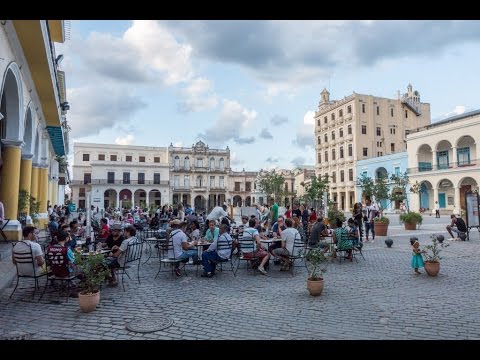
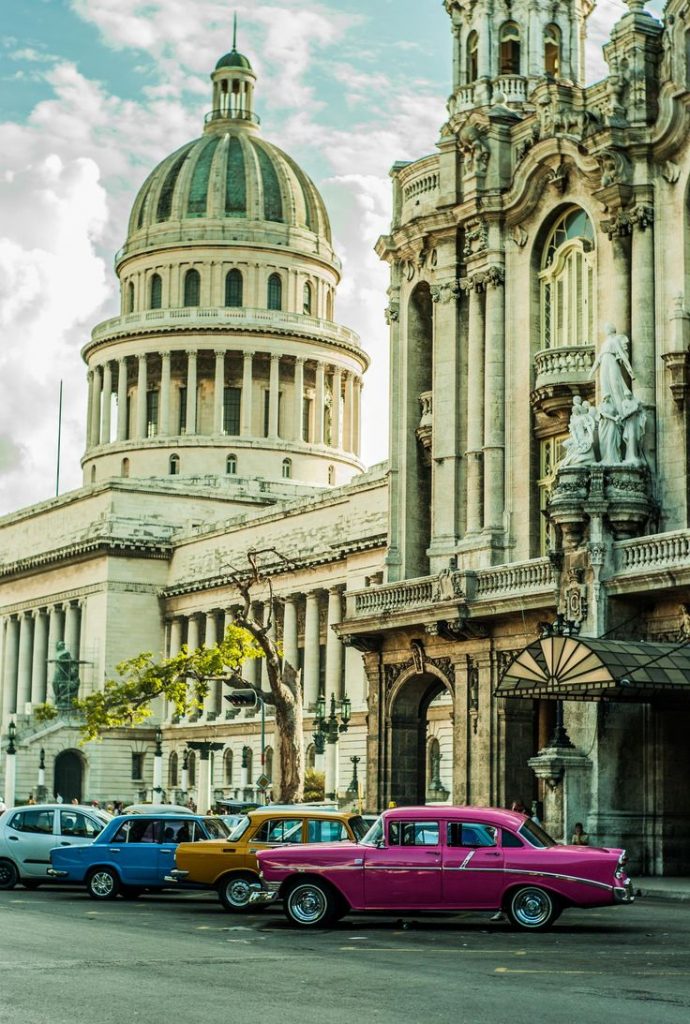
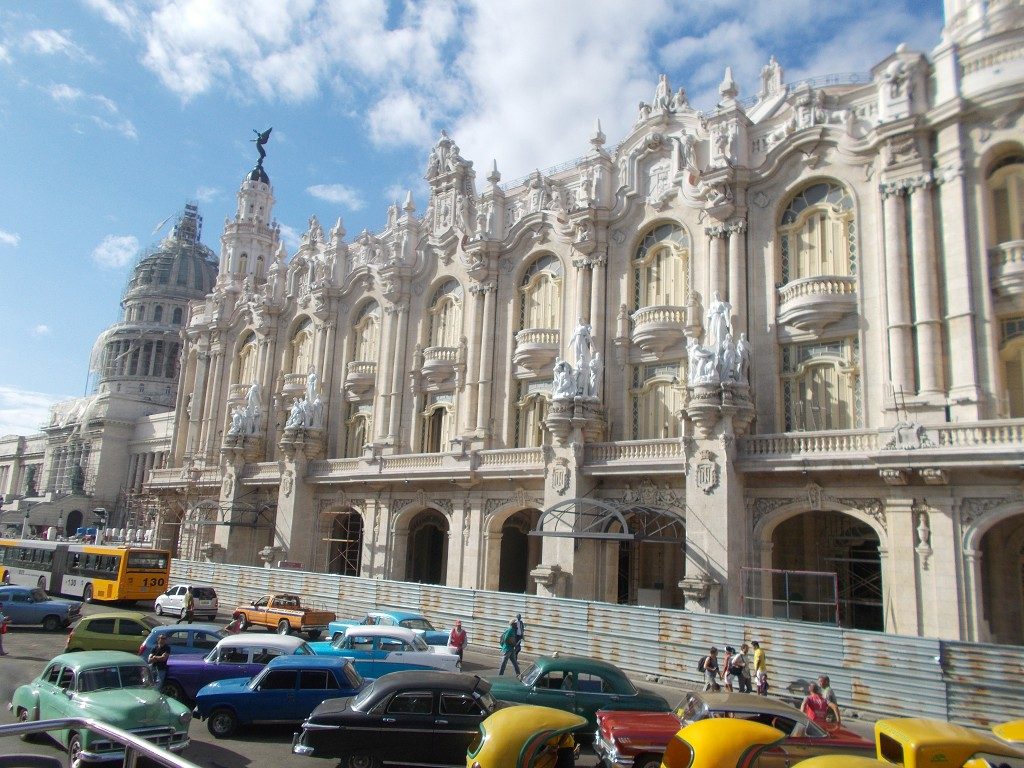
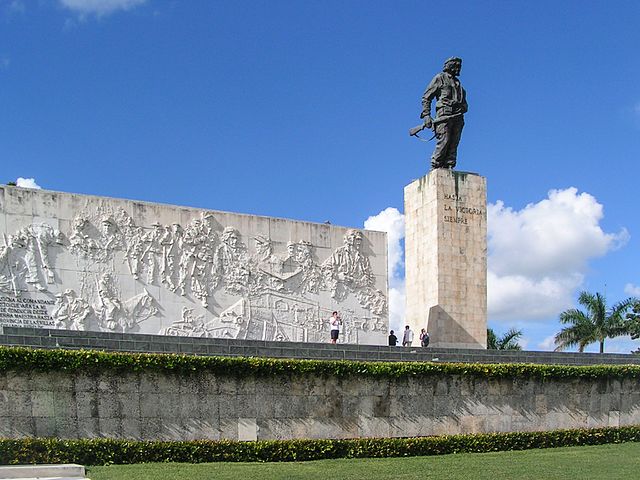

1 Comment